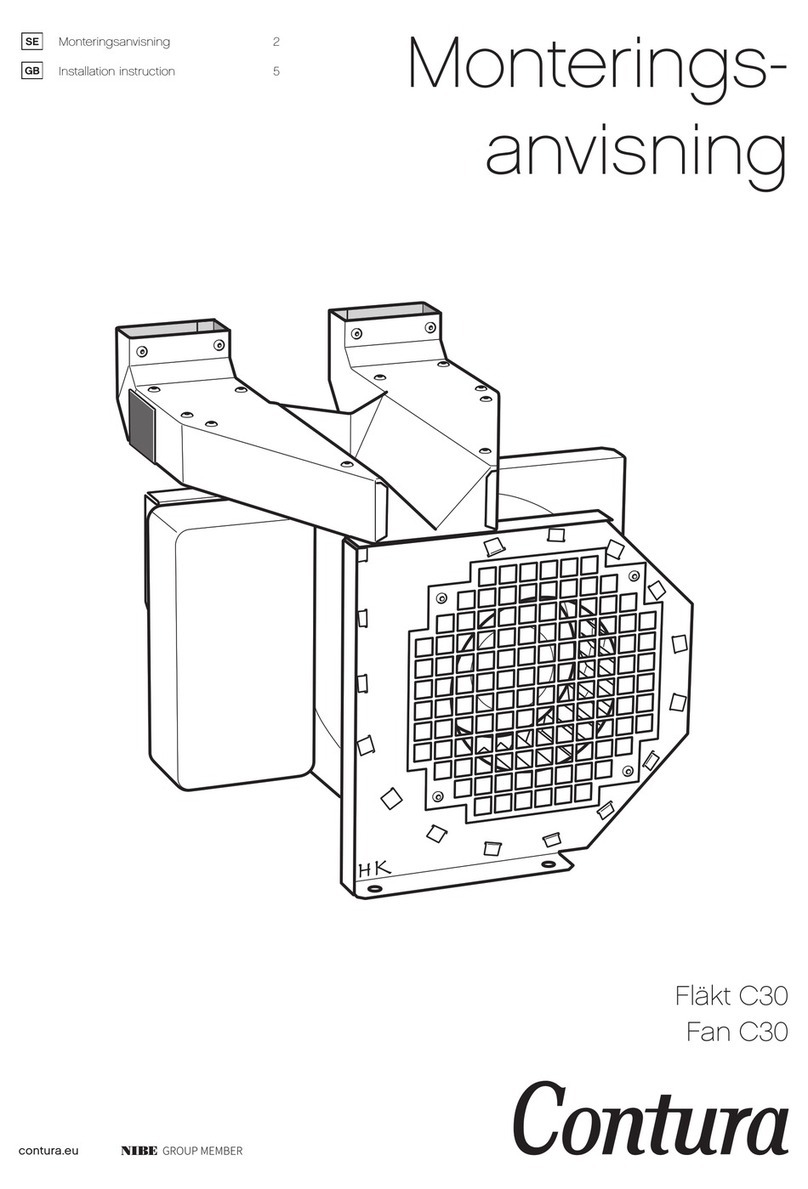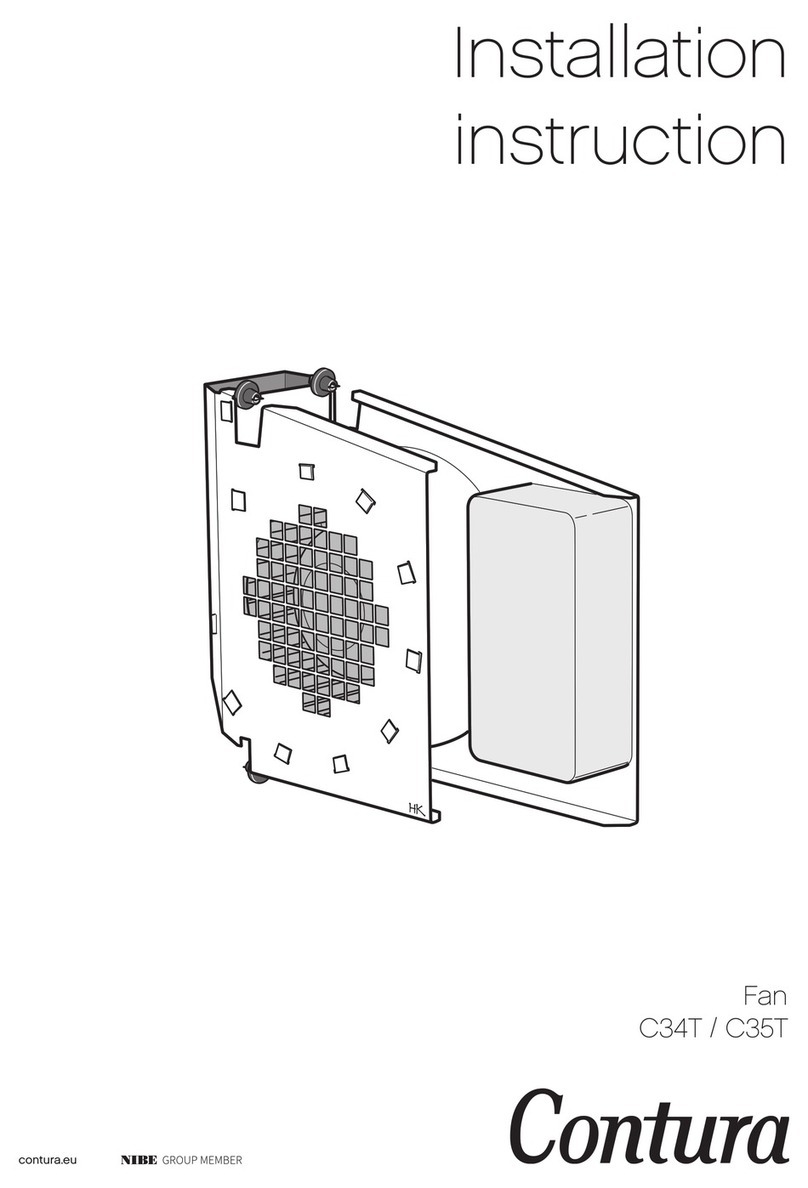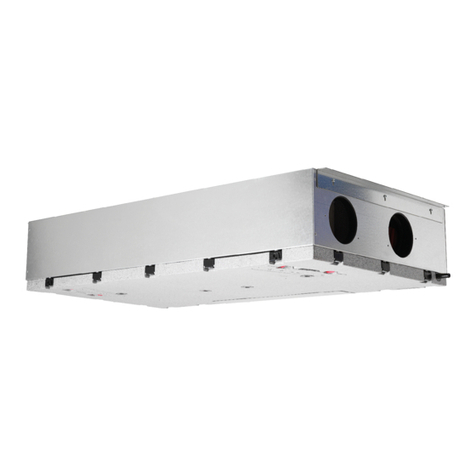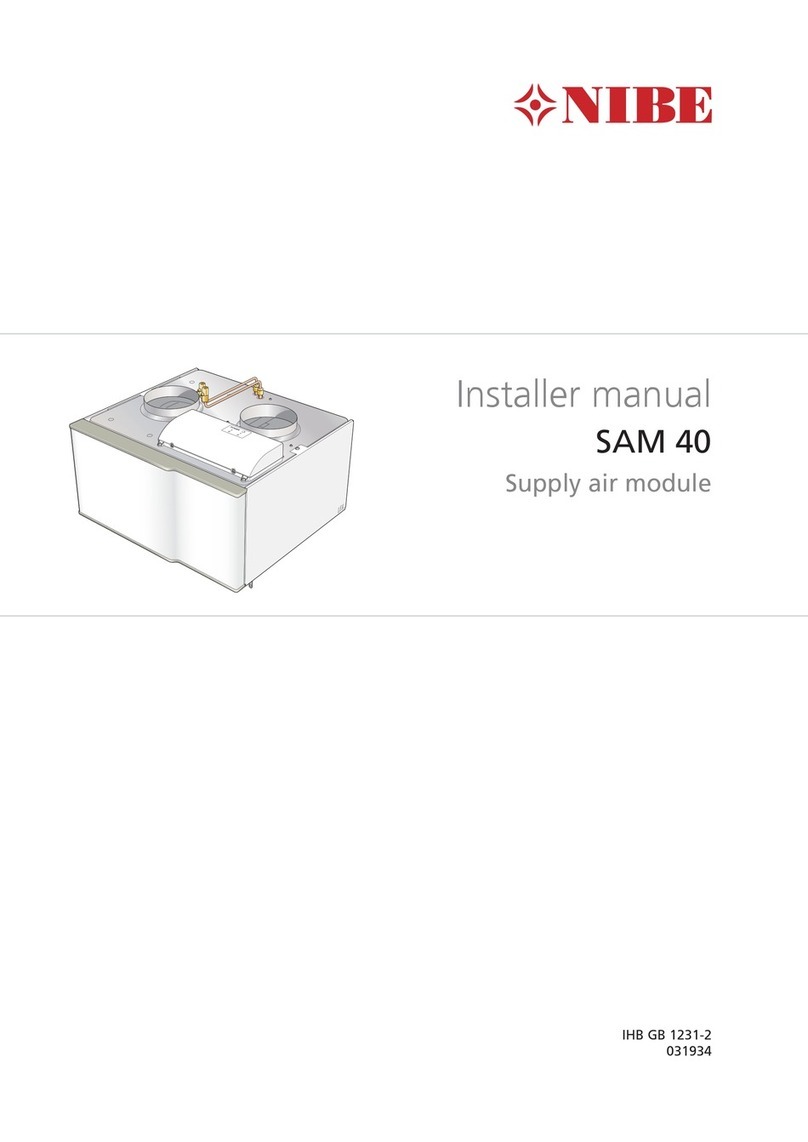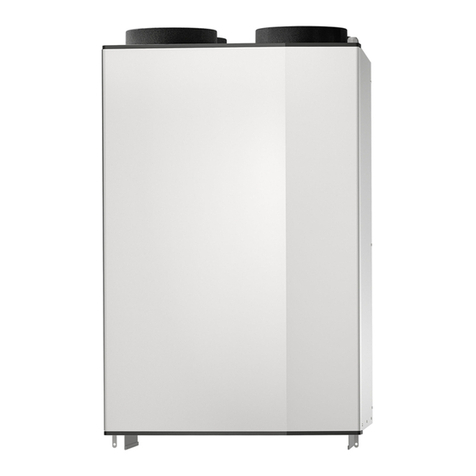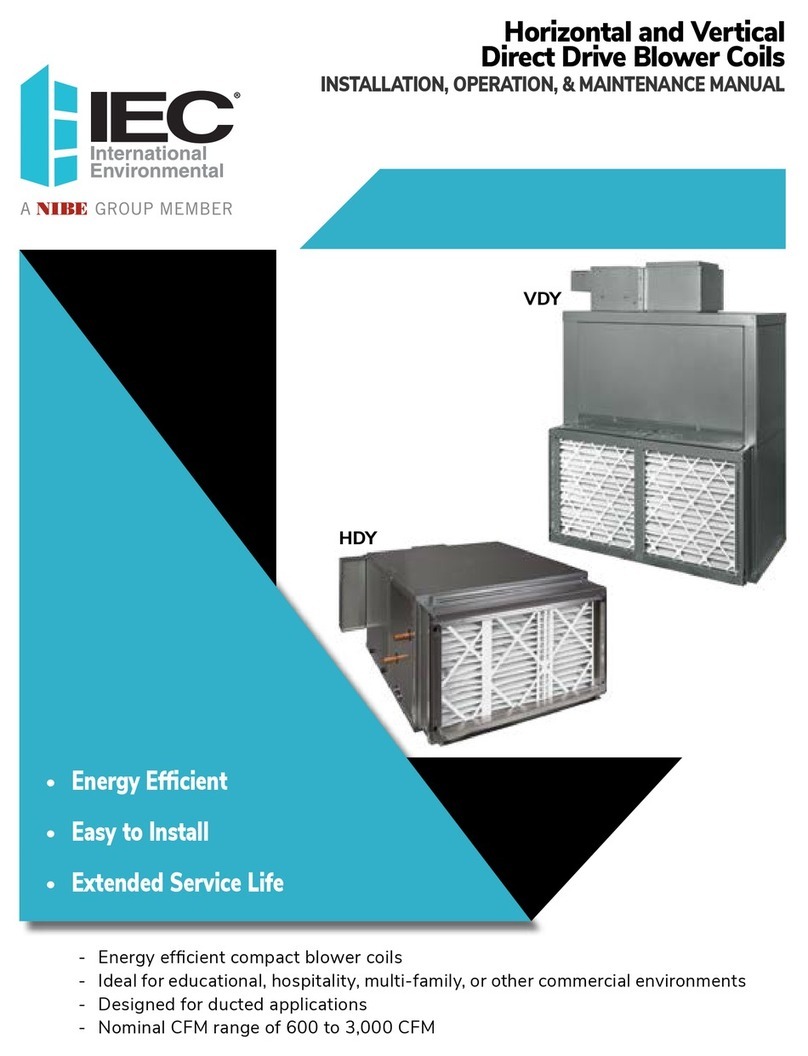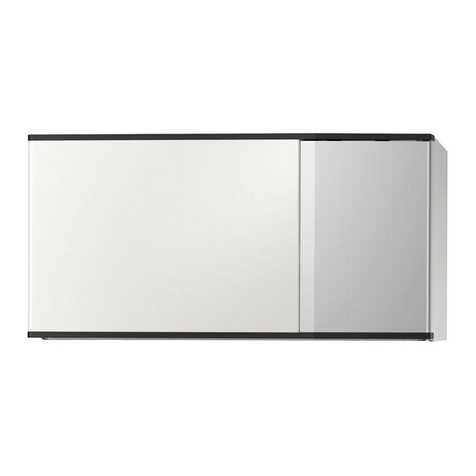Read the user’s manual carefully prior to installing and operating the unit.
Fulfil the user’s manual requirements as well as the provisions of all the applicable local and national construction, electrical and technical norms and
standards.
The warnings contained in the user’s manual must be considered most seriously since they contain vital personal safety information.
Failure to follow the rules and safety precautions noted in this user’s manual may result in an injury or unit damage.
After a careful reading of the manual, keep it for the entire service life of the unit.
While transferring the unit control the User’s manual must be turned over to the receiving operator.
Symbol legend:
The user’s manual consisting of the technical details, operating instructions and technical specification applies to the installation and mounting of the single-
room reversible ventilator with energy regeneration NIBE DVC 10 (hereinafter «the unit» as mentioned in the «Safety Requirements» and «Manufacturer’s
Warranty» sections as well as in warnings and information blocks).
CONTENTS
SAFETY REQUIREMENTS
Safety requirements....................................................................................................................................2
Purpose...............................................................................................................................................................4
Delivery set.......................................................................................................................................................4
Designation key.............................................................................................................................................4
Technical data.................................................................................................................................................5
Design and functioning ...........................................................................................................................6
Mounting and set-up.................................................................................................................................8
Connection to power supply and control.................................................................................11
Maintenance.................................................................................................................................................28
Troubleshooting.........................................................................................................................................30
Storage and transportation regulations ....................................................................................30
Manufacturer’s warranty.......................................................................................................................31
Acceptance certificate ...........................................................................................................................32
Seller information......................................................................................................................................32
Installation certificate..............................................................................................................................32
Warranty card...............................................................................................................................................32
WARNING!
DO NOT!
UNIT MOUNTING AND OPERATION SAFETY PRECAUTIONS
• Disconnect the unit from power mains prior to
any installation operations. • Unpack the unit with care.
• Do not lay the power cable of the unit in close
proximity to heating equipment.
• While installing the unit follow the safety
regulations specific to the use of electric tools.
• Do not use damaged equipment or cables
when connecting the unit to power mains.
• Do not operate the unit outside the
temperature range stated in the user's manual.
• Do not operate the unit in aggressive or
explosive environments.
